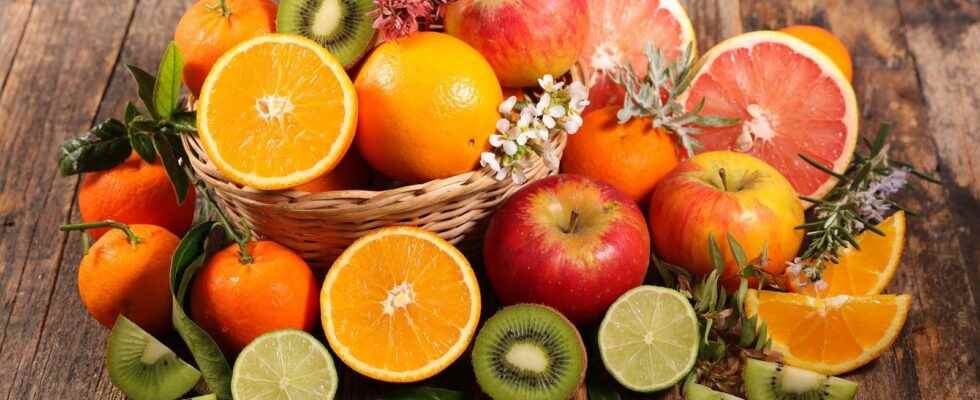After the fruits of autumn that can be stored like walnuts and hazelnuts or pears and apples, the vitamin season of winter with citrus is here! Small sample of the main fruits to savor from December.
You will also be interested
[EN VIDÉO] Why do some fruits ripen and others do not? Fruits that continue to ripen after being picked are said to be climacteric.
In winter, fruits packed with vitamins Sun, fully mature in the countries exotic original, fill the plates. Here are six essential fruits of winter.
Litchi
Also called the cherries from China, these Asian fruits are harvested all winter in thesouthern hemisphere. The lychees are highly valued for their delicate white flesh, with a mixed taste of rose and Strawberry. THE’tree covered with numerous clusters of small round fruits with rough pink or red skin. Fruits are rich in vitamins A, B and C. Eat quickly lychees. Dare some fruits in an exotic fruit salad. They are found in many juices and cocktails because their flesh is very juicy. Prepare sweet desserts like foams, pies, cheesecakes with passion fruit. Place some fruit to create an original dessert platter for Christmas.
Pineapple
Even if he’pineapple is on the stalls all year, its harvest period is winter. From Réunion, ‘Victoria’ or De Cayenne, this fruit contains a very sweet and juicy yellow flesh, entirely surrounded by a thick and slightly spicy rind. It is eaten raw or cooked and contains a lot of vitamins and minerals. Start with a juice or a cocktail. Then cook pork-pineapple skewers or duck à lapineapple. And finish with an exotic fruit salad, tarts or a charlotte. For Christmas, dare it liver pineapple fat for a change of fig !
Passion fruit
Coming from far away, the passion fruit is harvested throughout winter until spring. The smooth, withered fruits of colors different depending on the maturity of the fruits, grow on very long lianas. The yellow pulp which contains seeds is soft and sweet. It is rich in minerals, vitamins and trace elements. It is a fruit that cannot be kept. For the sweet side, let yourself be tempted by crèmes brûlées, panacottas, macaroons or a passion fruit cheesecake. For the salty side, prepare a tartare of Salmon, a carpaccio of Saint-Jacques, a back cod or bar with passion fruit.
Kumquat
This small elongated citrus fruit that grows on a tree, is harvested from November to early spring. The acidity of the pulp blends perfectly with the sweet taste of its skin. the kumquat is rich in fiber, minerals and vitamins. Raw or cooked, simply enjoy it by decoration or cooked. Flavor small cookies or chocolate mousse, add a touch of the exotic to a citrus cake or verrines, preserve them in syrup, candied with chocolate, roasted with a chicken fillet, etc. There are a thousand and one ways to taste this little citrus fruit!
Mango
Even if we find mangoes a good part of the year on the stalls, the full period is in winter. The fruits grow on a large tree. Full of sunshine, this tropical fruit contains an orange-yellow flesh, very juicy. This fruit is very rich in fiber and vitamins. Once peeled and the core removed, combine it with a duck breast, a fillet of fish or chicken in foil. For dessert, reinvent a crumble, flavor a fruity cream or mousse, bake cupcakes or cakes with exotic fruits.
Clementine
Unlike mandarin, the Clementine does not contain seeds. This citrus fruit cultivated around the Mediterranean, including Corsica with the Clementine from Corsica IGP, grows on a nice-sized tree. Its pulp is appreciated for its freshness and its content of vitamins C. Once peeled, it is consumed quickly. Along with lemon and orange, it is one of the most consumed citrus fruits. Cook it in a winter fruit compote, gratins, soufflés and many other pastries. Keep it confit, as a marmalade or as a jam. Dare to combine it with prawns, duck breast, quinoa, a straw hut bar and invite it to your holiday menu.
Interested in what you just read?
.
fs10
